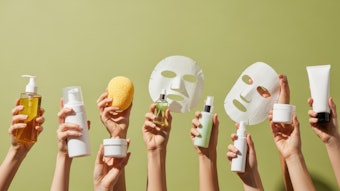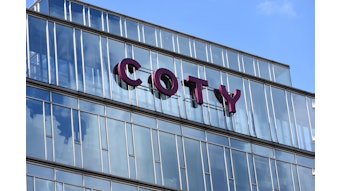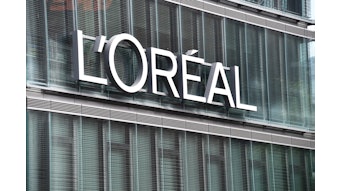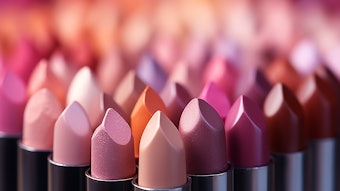Price Pressure Prevents Growth in Developed Markets
The largest regional personal care markets, Western Europe and North America, with 2006 sales of $27 billion and $19.6 billion respectively, are plagued with low growth rates, each with less than 15% value growth between 2001 and 2006. Consumers in these markets are far more willing to economize on personal care than they are on cosmetics products, trusting that the quality of even cheap brands is of a high enough level to deliver basic hygiene—meaning that price competition is fierce between toiletries, brand loyalty is low and private label is a greater threat within these sectors. This is further exacerbated by the retail distribution of personal care in Western Europe and North America, which is dominated by price-cutting retailers such as supermarkets and discounters; in Western Europe, almost 50% of all toiletries are sold through these channels. It is therefore not surprising that encouraging consumers to trade up is central to the strategy of personal care brands in the more mature markets.
The most successful means of achieving this is through the provision of added functionality and convenience with the inclusion of cosmetic benefits—including added skin care properties, antiaging and exfoliating. The challenge that faces most toiletry manufacturers is that private label looms close behind, offering increasingly sophisticated alternatives at lower prices. U.K. supermarket chain Tesco, for example, launched an organic personal care line with approximately 40 products in February 2007, and Asda and Waitrose have now followed suit.
Emerging Sectors Booming in LA and Eastern Europe
Latin America—with double-digit compound annual growth rates across all toiletries sectors during 2001–2006 and value growth of 73.4% across the same period—is the fastest moving region for personal care products. Eastern Europe, with average annual growth rates of 9.9% and gains of $2.5 billion since 2001, is not far behind. Going forward, growth is set to be driven by underdeveloped sectors—including sun care, baby care and men’s grooming—in both regional markets.
Manufacturers will be pivotal in maximizing the potential that exists in these categories, and there will be a need for them to take on the role of educator and explain the uses and benefits of these products. In Brazil, for example, Beiersdorf’s Nivea brand sponsored campaigns on skin cancer prevention in schools and other institutions in 2006, an effort that included a play showing the importance of using sun protection products regularly. A similar strategy was employed by Russian player Nevskaya Kosmetika to drive growth in baby care; in October 2006 the company implemented a campaign in support of its Ushasty Nian brand in 87 medical establishments in 13 Russian cities, offering baby skin care training for mothers and mothers-to-be.
Bath and Shower Proves a Drain on Personal Care
With global sales of $23.6 billion, the bath and shower products category is among the largest in personal care. However, with average annual growth rates of 3.5%, it is the least dynamic sector in cosmetics and toiletries. In Western Europe and North America, manufacturers seem to have reached a dead end, with maturity of bath and shower products in these developed economies leaving little room for volume growth. In addition, increased competition puts pressure on prices, thus limiting opportunities for value gains. North America, in particular, has been struggling with 0% growth each year since 2001.
Segmentation is one of the key trends driving the sector, with more products designed specifically for women, men, children and seniors. New spins on this include targeting athletic and active lifestyle consumers with convenience formats and strong-acting, refreshing formulations. Examples include Liz Sport Shower Gel (Liz Claiborne) for women and Physio Sport Shower Gel, which moisturizes and uses aromatherapy ingredients to soothe sore muscles. Cleansing is still the primary purpose of bath and shower products, but enhancing mood and offering a holistic, pampering experience have also become key. Spa and aromatherapy claims have, therefore, become commonplace, and textures and formulations are more fragrant, thicker and more luxurious. The at-home spa trend also offers opportunities for segmentation, with products distinguished by their influence on mood. Despite this trend, however, consumers still prefer the convenience of showering, and bath additives are on the decline at the global level.
A look at less-developed markets, in contrast, highlights the different strategies that need to be employed. India’s bath and shower penetration is among the lowest in the world, with spend less than $2 per capita in 2006, and value growth there is being driven by bar soap. Manufacturers are dropping pack sizes to reduce unit prices and place products within reach of the country’s less affluent majority. There is also a push to widen penetration to India’s rural poor. Unilever’s Swasthva Chetna (“health-awakening”), launched in partnership with the Indian government, covers about 18,000 villages in eight states to reach 70 million rural dwellers and teach the importance of hand washing. In the country’s more affluent western states, body wash/shower gel is beginning to find demand, although in the country, as a whole, it remains nascent, with sales of just $9 million, or less than 1% of total bath and shower products sales.
Oral Hygiene Education Key in Emerging Markets
Oral hygiene is the largest of the toiletries sectors at $27.7 billion, although it is also among the least dynamic, both historically and in forecast terms. Despite attempts to add value through high-tech innovations and pricey additions to oral care routines, including tooth whiteners and dental floss, growth in per capita expenditure in mature markets—including North America, Australasia and Western Europe—is tailing off. Manufacturers will, therefore, perform better by focusing attention on underdeveloped markets.
Per capita expenditure in Asia-Pacific, Latin America and Eastern Europe in 2006 was $1.8, $7 and $5.1, respectively, in comparison to $16.1 and $18.9 across Western Europe and North America. In Eastern Europe and Latin America, particularly, government initiatives have focused on promoting good oral care generally, while advertising campaigns by manufacturers have concentrated more on promoting greater frequency of changing brushes and higher consumption of toothpaste. In the Philippines, domestic personal care manufacturer Lamoiyan Corp. supported a dental outreach project in 2005, the message being that oral hygiene is a basic human right.
In encouraging sales in rural communities and among less affluent urban dwellers (the United Nations estimates suggest at least one billion people live in slums, mostly in Asia-Pacific, Africa and Latin America), manufacturers also need to concentrate on keeping costs down. Procter & Gamble’s Gillette has launched a cheaper manual toothbrush targeted at less affluent consumers in Brazil. Small pack sizes for toothpastes are also ke y, and the affordable sachet format that revolutionized India’s hair care sector could also be applicable in oral hygiene. Local suppliers are better positioned to offer products for less, and there are also opportunities for retailers in the private label segment, where comparable products are offered at lower prices. However, educational campaigns backed by multinationals are instilling brand loyalty among the world’s emerging market consumers.
Dynamism in Baby Care Fueled by Health and Wellness
Global baby care sales grew at 6.8% in 2006, making the category the second most dynamic behind sun care. Demographics and economic factors are the vital drivers of baby care. Increased wealth clearly is a spur to sales, with parents trading up from adult toiletries, but higher birth rates, which theoretically should spur demand, are not always a positive. In some markets, it has actually been the slowing of the birth rate combined with women giving birth later in life that drove growth. These mothers are more informed, more protective and are generally further ahead in their careers, giving them more money to spend on their children. Health and wellness is one of the key secondary drivers of growth in this area. In baby care, fear about the possible side effects of the chemicals used in cosmetics and toiletries is most acute, given the delicate nature of baby skin. Continuing reports that point to the potential harm of some ingredients is expected to spur demand for natural and organic baby care.
As natural and organic baby care sees increasing demand, new products in this niche are expected to proliferate, causing manufacturers to look for new ways to differentiate their brands from competitors. Food ingredients are likely to be one such way. The links between nutrition and health are already well understood, and many parents would feel more comfortable purchasing products with clearly identifiable ingredients. Local players in countries such as China and India, where there is a tradition of natural medicine, could also exploit health-giving herbs and plants to give their products an edge in their domestic markets. Looking forward, the market is likely to see an increase in ethical brands, those that are sustainably sourced or use biodegradable or recyclable packaging, as well.
Sun Care a Hot Spot
With global sales topping $6.2 billion in 2006, sun care was the most dynamic category over the 2001–2006 period for the entire beauty care market, and is set to head growth for toiletries into the longer term. A huge potential for future development exists, especially in emerging markets where penetration is currently low. Euromonitor International observes that increasing consumer awareness of the risks of sun exposure—including skin cancer, discoloration and aging—is the key to driving demand for sun care. Australia, where the Cancer Council has been vigorous in its attempts to encourage consumers to “slip slop slap,” is a case in point here. Awareness is currently most developed in the mature markets, hotter countries and those where skin tones are more obviously impacted by the effects of UV radiation. However, as governments become more concerned with mounting health issues and manufacturers look to boost worldwide penetration rates, consumer education campaigns are spreading globally.
Manufacturers are working not just to raise awareness of sun overexposure, but are also beginning to make it easier for consumers to protect themselves. A major barrier to sun protection use is the inconvenience of many products, which are difficult and time-consuming to apply. Portable products, continuous sprays, longer-lasting formulations and even sun protection pills are just some of the innovations coming onto the market that are designed to leave consumers with no more excuses not to protect their skin. A notable example is Johnson & Johnson’s Piz Buin 1 Day Long, with label claims to be water- and sweat-resistant and to provide UVA and UVB protection for up to 10 hours. Similarly, educating consumers to use self-tans as a safer alternative to sun bathing or sun beds will only work if self-tanning products are quick and easy to use and achieve even, natural-looking results.
The rise of medicated products is one possible challenge to the development of sun care. Sunscreens containing mexoryl are sold OTC throughout the European Union countries and in many other sun care markets, and pose an increasing risk to sales of standard sun care. Manufacturers could up the competitiveness of sun protectors against this emerging threat by seeking endorsements with health charities—New Zealand’s biggest-selling sun care brand, for example, is produced by its Cancer Society. Teaming up with high-profile dermatologists to create brands, a method commonly used in skin care, could also boost credentials. Restricting distribution to pharmacies, drugstores and specialist retailers—the types of channels that stock a select range of top quality products—is another method sun care brands could use to project a more efficacious image.
Future Outlook
In spite of the dynamism of the smaller sectors, the future of personal care overall is less than promising, with forecasted growth for 2006–2011 of just 12%. As price pressure continues to squeeze the toiletries sectors, the trend toward incorporating cosmetic properties or injecting extra functionality into basic hygiene products is expected to gain momentum, driving premiumization. The danger is that the inclusion of certain added benefits, such as tooth whitening in oral hygiene or antiaging in bath and shower products, will become standard practice, with brands losing unique selling points and becoming less able to claim higher prices. It will, however, create more space at the bottom end of the market, a potential spur to private label competition and participation by local companies in the emerging markets. This focus on functionality is also expected to create more fluidity between sectors. Skin care has already found its way into all toiletries sectors, save oral hygiene, but there is further scope for crossover products. Sun protection or self-tanning in color cosmetics, for example, or hair care in bath and shower products.
Natural and organic ingredients are becoming increasingly central to many toiletries sectors, and the focus for brands should be on eliminating the use of all chemicals and synthetic ingredients. Price pressure is not only driving innovation, it is also working to slow it down, pinching manufacturers’ margins and making it difficult for them to justify large expenditures on research and development. This, in turn, will further stimulate the need to compete on price and erode sales growth in the more mature markets. It could also see companies that predominate in the toiletries sectors, Johnson & Johnson and Colgate-Palmolive being two prominent examples, expanding their presence in cosmetics where growth is more dynamic and value prices are less susceptible to discounting.










